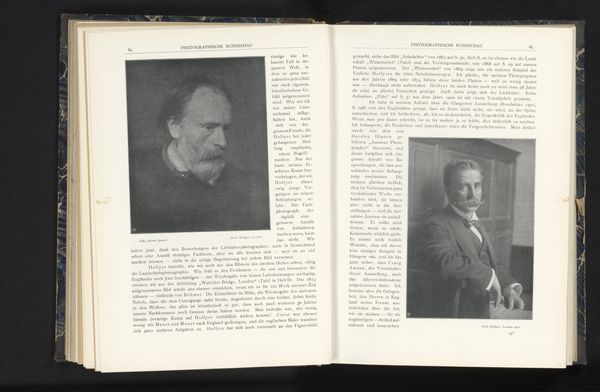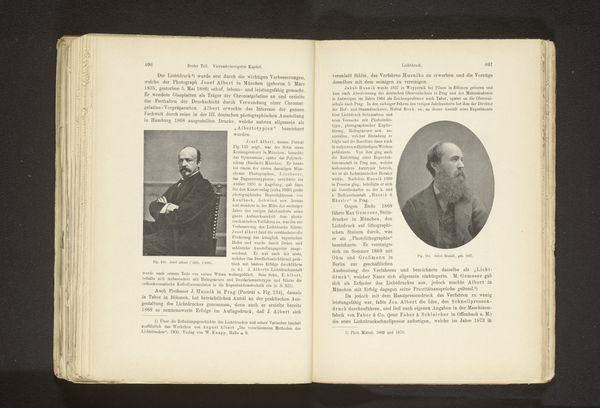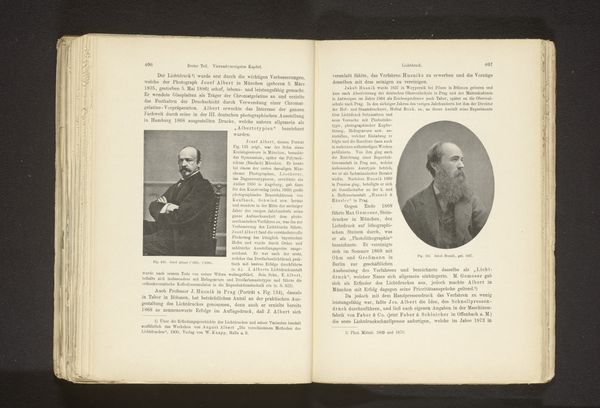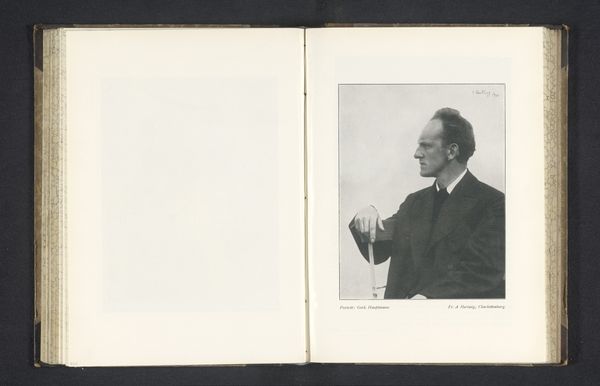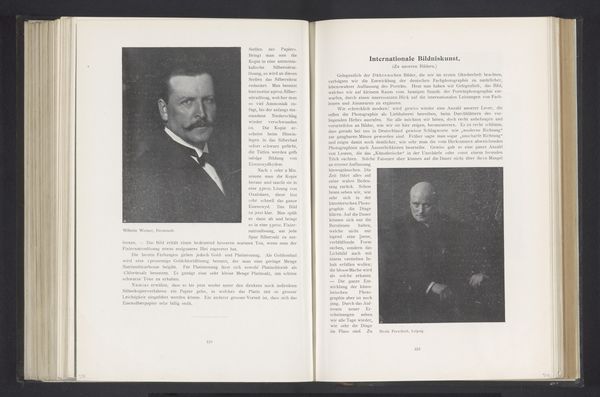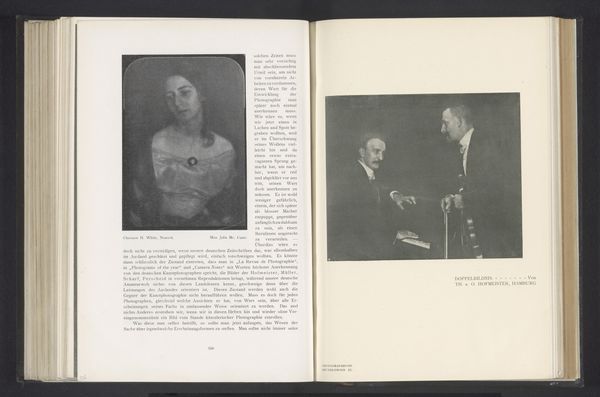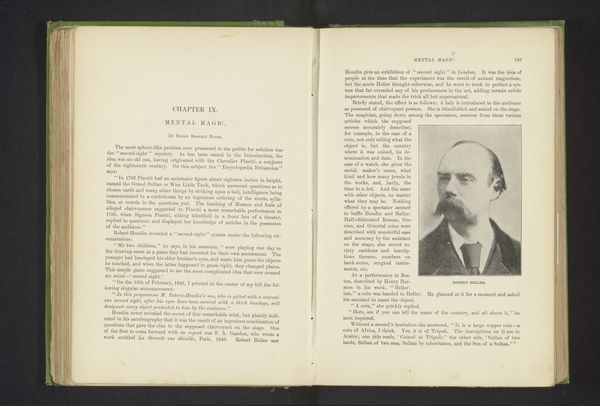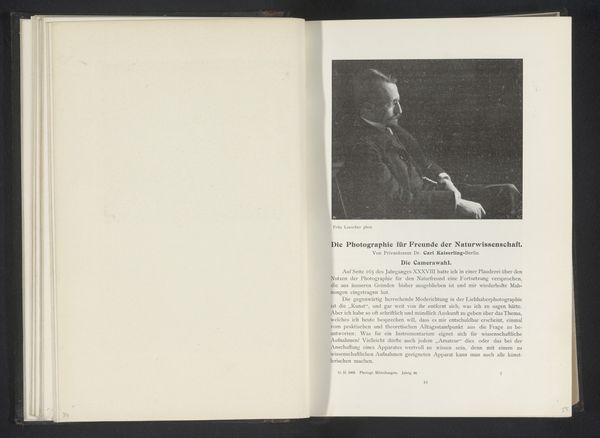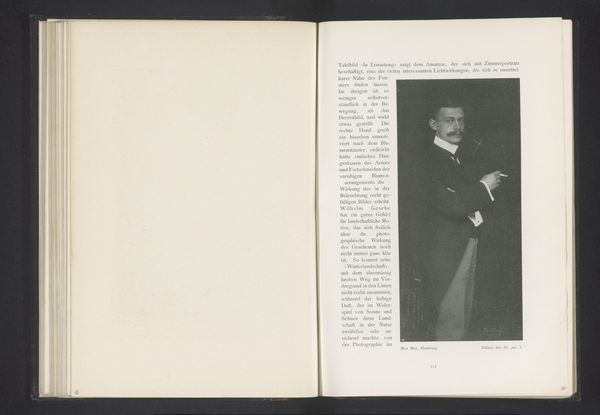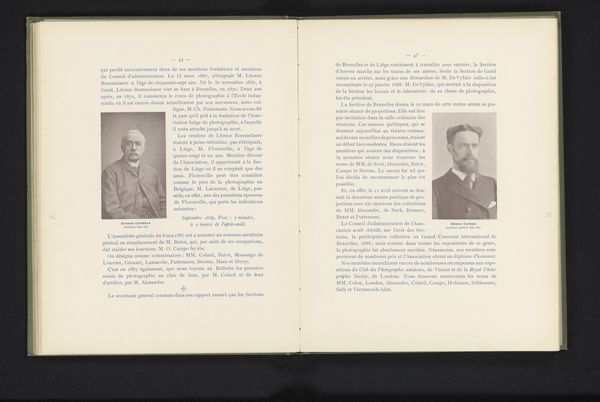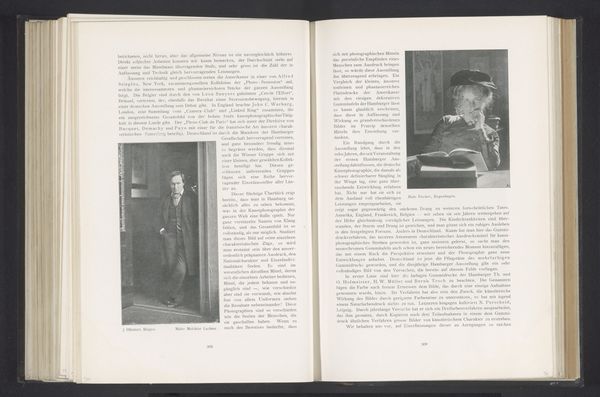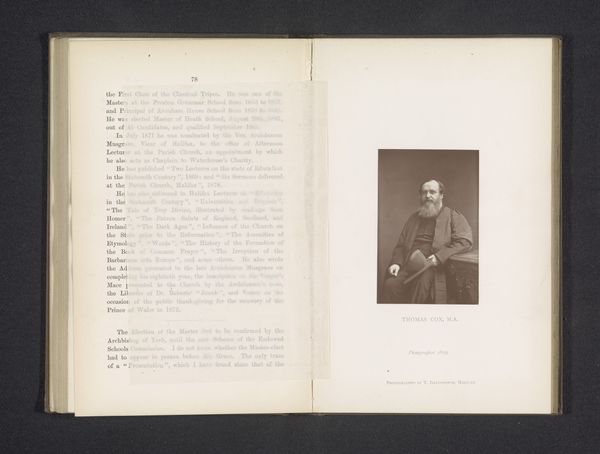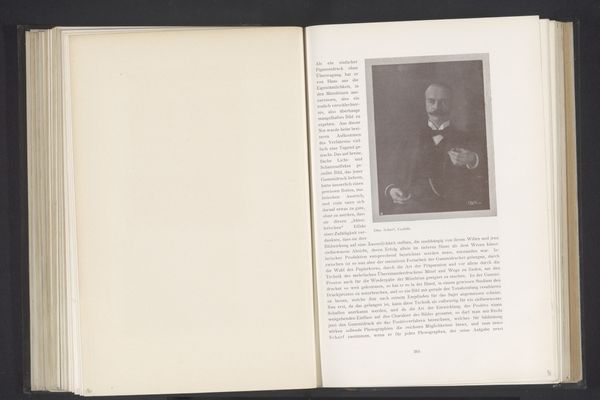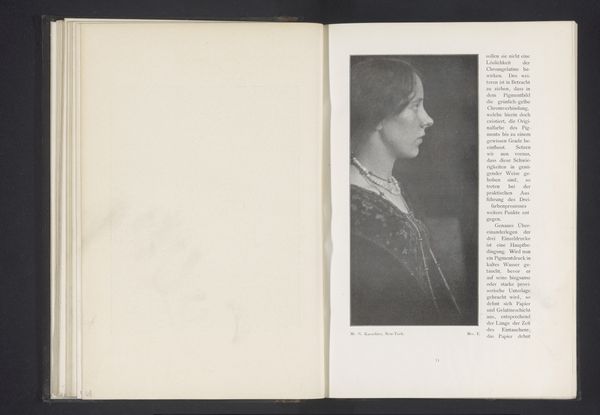
photography, gelatin-silver-print
#
portrait
#
pictorialism
#
photography
#
gelatin-silver-print
Dimensions: height 144 mm, width 98 mm
Copyright: Rijks Museum: Open Domain
Editor: Here we have Gertrude Kasebier’s *Portret van een onbekende vrouw*, which translates to *Portrait of an Unknown Woman*. It’s from before 1903 and done with a gelatin silver print, giving it a kind of luminous, almost ethereal quality. It’s just a really arresting image. What do you see in it? Curator: Well, considering Kasebier's engagement with Pictorialism, and specifically how she leveraged the gelatin silver process, I am drawn to consider the conditions under which such images are made. How was her studio set up? What kind of labor was required to manipulate the light and chemicals to achieve this hazy effect? And importantly, who was this unknown woman, and what was her relationship to the photographer, and to the final printed product, as a form of material culture? Editor: So you are less interested in the woman as a subject, and more interested in the material conditions and process around creating this photograph? Curator: Precisely. I'm more fascinated by understanding the photographic labor itself. Pictorialism, despite its aesthetic aims, also signifies a very specific type of craft production. Kasebier's manipulations, her choice of gelatin silver, are all deliberate actions rooted in the context of artistic and commercial photographic practices, raising questions about how her art challenged conventional photographic boundaries. What do you make of Kasebier's process here, understanding it's very deliberate and materially grounded? Editor: That gives me a lot to think about. I’d been viewing it from a perspective of artistic expression. But framing it through the lens of the labor, the materials, makes me appreciate it as a product of its time. Curator: Absolutely, viewing it through materiality makes you reflect about artistic creation within labor and social structures. Hopefully you have gained a greater understanding of what such critical interpretation allows.
Comments
No comments
Be the first to comment and join the conversation on the ultimate creative platform.
